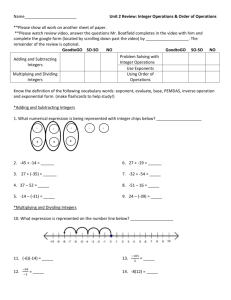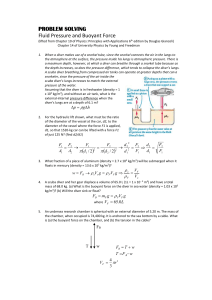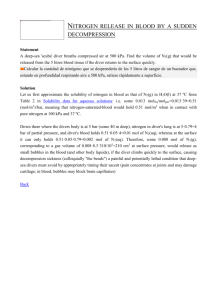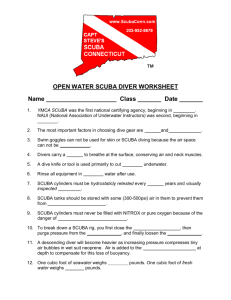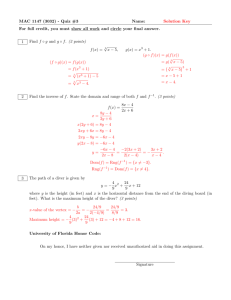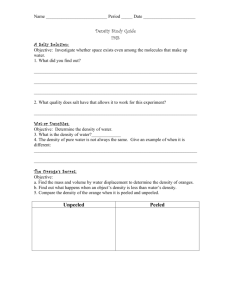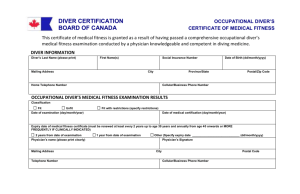doc: Boyle's Law Practice
advertisement
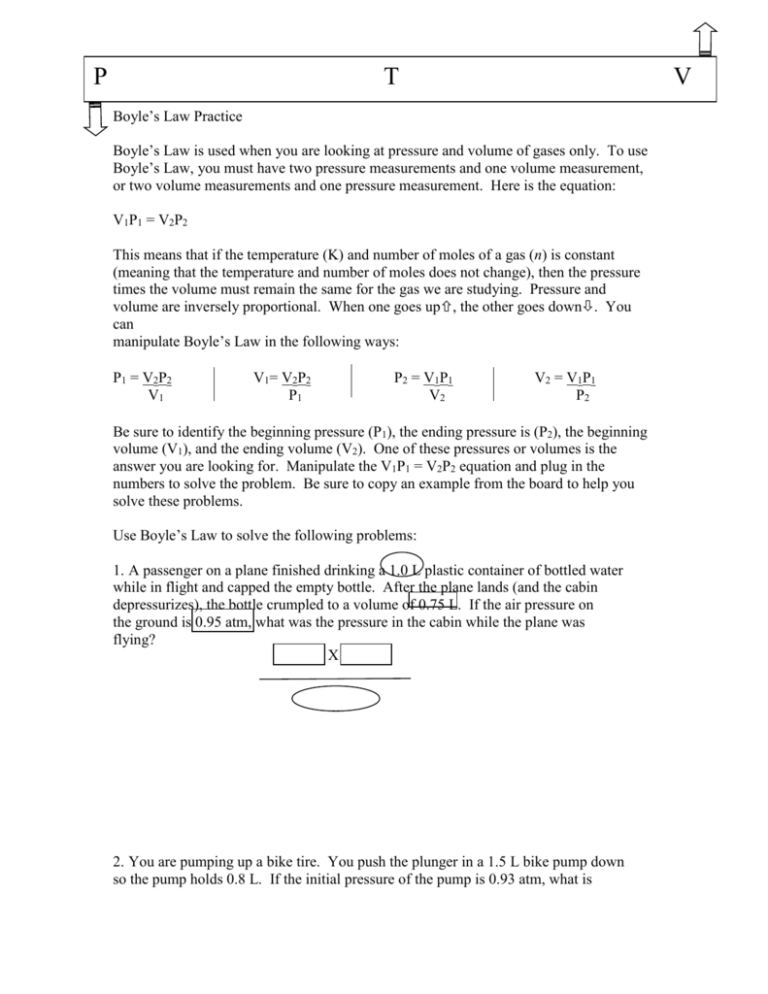
P T V Boyle’s Law Practice Boyle’s Law is used when you are looking at pressure and volume of gases only. To use Boyle’s Law, you must have two pressure measurements and one volume measurement, or two volume measurements and one pressure measurement. Here is the equation: V1P1 = V2P2 This means that if the temperature (K) and number of moles of a gas (n) is constant (meaning that the temperature and number of moles does not change), then the pressure times the volume must remain the same for the gas we are studying. Pressure and volume are inversely proportional. When one goes up, the other goes down. You can manipulate Boyle’s Law in the following ways: P1 = V2P2 V1 V1= V2P2 P1 P2 = V1P1 V2 V2 = V1P1 P2 Be sure to identify the beginning pressure (P1), the ending pressure is (P2), the beginning volume (V1), and the ending volume (V2). One of these pressures or volumes is the answer you are looking for. Manipulate the V1P1 = V2P2 equation and plug in the numbers to solve the problem. Be sure to copy an example from the board to help you solve these problems. Use Boyle’s Law to solve the following problems: 1. A passenger on a plane finished drinking a 1.0 L plastic container of bottled water while in flight and capped the empty bottle. After the plane lands (and the cabin depressurizes), the bottle crumpled to a volume of 0.75 L. If the air pressure on the ground is 0.95 atm, what was the pressure in the cabin while the plane was flying? X 2. You are pumping up a bike tire. You push the plunger in a 1.5 L bike pump down so the pump holds 0.8 L. If the initial pressure of the pump is 0.93 atm, what is the pressure inside the pump after you push down the plunger? 3. Your friend sits on a 25.0 L kangaroo ball, squishing the ball so that it is only 17.5 L. What is the pressure inside the ball if the outside air pressure is 100 kPa (kilopascals)? 4. A diver breathes out 4.5 L of air deep under the water where the pressure is 509.6 kPa. Pressure at the surface is 101 kPa. When the air reaches the surface, what will the volume of the air bubble be? 5. An underwater volcano burps up a bubble of gas that has a volume of 36.0 L. The pressure on the gas bubble when it is first emitted is 2352 kPa. The pressure on the surface of the water is 101 kPa. How big will the gas bubble be when it reaches the surface? Boyle’s Law Activity Sheet V1P1 = V2 P2 Purpose: In this activity, you will investigate pressure and volume relationships in Boyle’s Law by manipulating a model. Soda Bottle Scuba Diver Materials: 1- pre-made soda bottle scuba diver, 1-2L soda bottle w/cap per person, 1disposable pipet per person, water Procedure: 1. There should be one soda bottle scuba diver at your lab station. Play with the soda bottle scuba diver. Now squeeze the bottle. What happens to the scuba diver? 2. What have you done to the pressure in the soda bottle? 3. How does this change in pressure allow the scuba diver to sink to the bottom? 4. Looking at the soda bottle scuba diver, when pressure is increased outside the diver, what happens to the volume of air inside? 5. Draw a line on the graph below to represent the relationship between the pressure on a gas and its volume. Underneath, give a specific example from the soda scuba diver activity that illustrates your relationship. 6. Do you think this example is a good representation of Boyle’s Law? Why or why not. Let’s Go Diving Materials: 2L soda bottle w/cap, beral-type pipet (thin stem), hex nuts, water Procedure: 7. Now it is your turn to construct a scuba diver. Use a beaker of water to adjust the density of the pipet by partially filling it with water. Place the diver inside the soda bottle and cap the bottle. What is the best way to make the diver float? 8. What is the best way to make the diver sink? 9. Does anything happen when you place the sinking diver in the soda bottle and increase the pressure inside the bottle? Explain your reasoning by using pressure and volume relationships. 10. Human scuba divers have dissolved gasses in their blood just as people on the surface do. However, problems develop when the diver is in deep water and surfaces too quickly. What happens to the gases in the bloodstream as the diver rises too fast?
